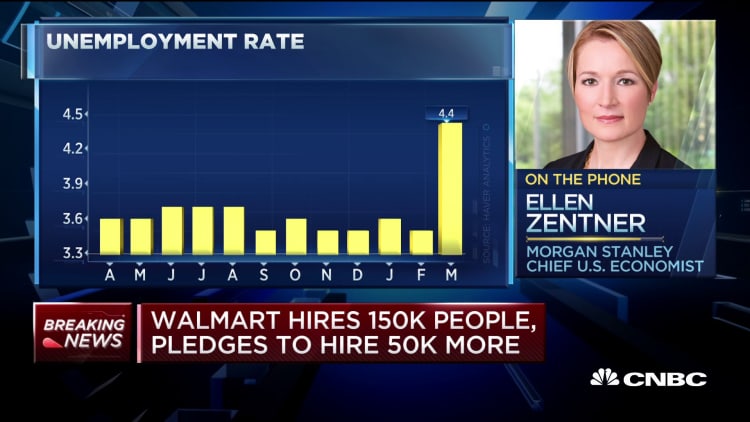U.S. households that already were less prepared to weather a financial storm are getting hit hardest from the recent rash of job losses across the country, research shows.
Adults with lower income (under about $37,500 annually) and middle income ($37,500 to $112,600) comprise a greater share of those who have lost their job or taken a pay cut due to the economic crisis brought on by the coronavirus pandemic, according to the Pew Research Center. Those groups also report having less in emergency savings than their higher-income (above $112,600) counterparts.
"I think we're seeing a deepening of the inequality that was already there," said Anna Brown, a Pew research associate.
The research shows that, among lower-income adults, 52% say they or someone in their household has lost their job or experienced a reduction in pay. In the middle-income tier, the share is 42%, and among upper-income households, it's 32%.
Separate research from payroll company Rippling shows that workers with annual salaries under $75,000 comprised nearly half (49.4%) of all job terminations between March 1 and April 14 among small and mid-sized businesses in a variety of industries. That's up from 42.2% in the first two months of the year.
Roughly 22 million individuals filed for unemployment in the four weeks ending April 11. As states struggle to process the cascade of claims, there are reports of people continuing to wait to receive their benefits weeks after filing.

At the same time, some households have begun receiving coronavirus stimulus checks from the federal government, with more than 80 million payments sent out last week — out of an estimated 171 million total expected to either be sent electronically to bank accounts or via paper check in the mail.
The payments are $1,200 for individuals, $2,400 for couples and $500 for dependent children under age 17. The payments start being reduced at $75,000 of income for single taxpayers, $112,500 for heads of household and $150,000 for married couples that file jointly.
The Pew research shows that 71% of lower-income adults plan to use that stimulus money to pay bills or on essentials. For those with middle income, that share is 49%; for upper-income, 34%.
"Upper-income households are more likely to put that in savings," Brown said. "So even though in some ways the stimulus checks may help lower-income [individuals] catch up on some bills, they'll fall behind in savings."
The disparity in fortunes also shows up in emergency savings: 23% of lower-income adults say they have money set aside that would cover expenses for three months, compared with 48% of those with middle-income and 75% of people with income above that threshold, the Pew Research shows.
Additionally, more than half of adults (53%) in the lower-income tier say they will struggle paying some bills in April, compared with about 25% of middle-income and 11% among those with higher income.
More from Personal Finance:
Scammers are defrauding unemployed Americans
What to do if you can't pay your credit card bills
Avoid these mistakes with your 401(k)


